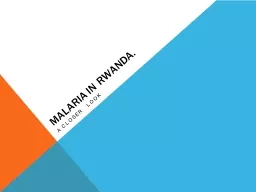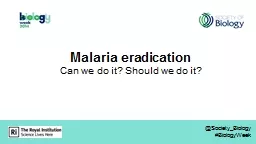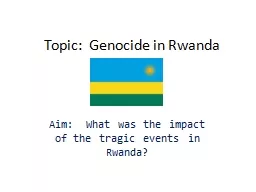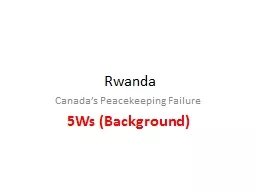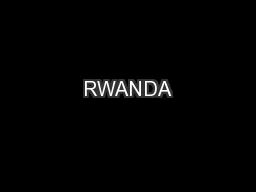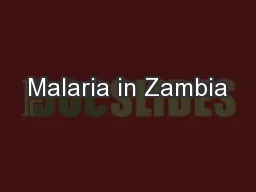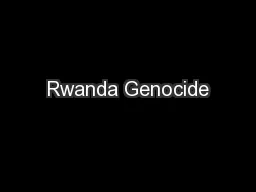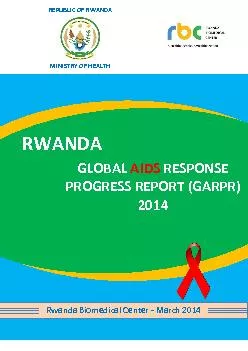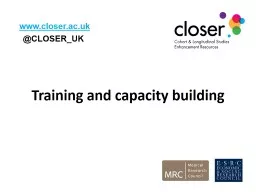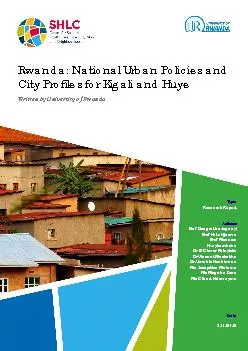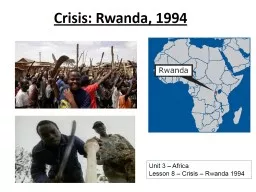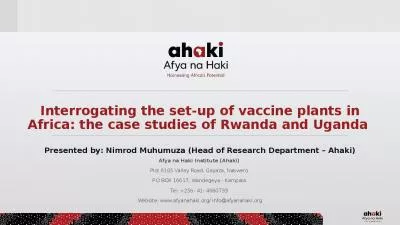PPT-Malaria in Rwanda. A closer Look
Author : cheryl-pisano | Published Date : 2019-02-02
Contents Global Scale International Response Elimination Question Rwandas Burden National Malaria Control Program Our Work and the Role of PCVs The Global Scale
Presentation Embed Code
Download Presentation
Download Presentation The PPT/PDF document "Malaria in Rwanda. A closer Look" is the property of its rightful owner. Permission is granted to download and print the materials on this website for personal, non-commercial use only, and to display it on your personal computer provided you do not modify the materials and that you retain all copyright notices contained in the materials. By downloading content from our website, you accept the terms of this agreement.
Malaria in Rwanda. A closer Look: Transcript
Download Rules Of Document
"Malaria in Rwanda. A closer Look"The content belongs to its owner. You may download and print it for personal use, without modification, and keep all copyright notices. By downloading, you agree to these terms.
Related Documents

